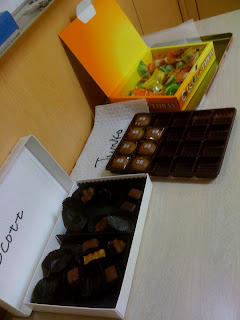Do you ever think about doing something and then put it off?
I did with capoeira - for five years! I kept thinking - Oh, I must try that cool-looking-Brazilian-dancey thing'. And promptly procrastinated for five years.
As PCP-ers, we know the value of just getting on with it! So for those who have been asking about capoeira or those who are finishing the PCP on Sunday and looking for a new challenge, here is my introduction to the wonderful art of capoeira.
Capoeira - dance, art, music, martial art, play...
The art began in the days of slavery in Brazil. It was a way to learn self-defence skills but use the cover of dance-like movements and song to appear to be just playing around for fun. Capoeira went through various stages of being practised outside the slave community, including being banned for a number of years. Some people say the tradition for capoeiristas (people who play capoeira) to have nicknames comes from high profile Brazilians wishing to hide their capoeira identity.
More on the history of capoeira here.
Isn't it just for super-bendy-hardcore 'naturals'
No, it isn't, but if you keep doing it then watch out! A capoeirista is flexible, strong, and has fast reflexes. There are difficult and jaw-droppingly beautiful moves too, but you can play capoeira with the basics, jinga, defence moves, attack moves.
Cool couple demonstrating the basic moves of capoeira in Miami!
The idea is to keep the energy going, analagous to the give and take of a conversation. Only the conversation is between two bodies.
It all sounds kinda sexy.
Uh-huh. Of all the sports I've tried, including modern dance and salsa, capoeira is the sexiest. I think it's to do with the to-and-fro in the roda, plus power and grace. There are explosive moves, defensive moves, hand gestures, skin on skin. All done to music and singing.
To crudely oversimplify, capoeira is an electric combination of play-fighting and dancing. The basic move of capoeira, the
jinga, means 'swing'. It comes from Brazil and you do it without any equipment except the musical instruments.
No equipment except musical instruments? Is it like a PCP workout?
Only in the sense of using body-based exercises. I'm going to annoy Patrick and say, if you do it right, it is a ton harder. In a PCP workout you know what you're going to be doing with your body for a given set. In capoeira, you need to think and move at the same time.
Capoeiristas do meet and practise in halls and such for classes, but most groups put a huge focus on the roda and playing outside, under the sky, on the beach, in the park.
Serious Play
A capoerista combines the energy from the music, clapping and singing from people in the circle, and their own feelings in the moment. It can be both cooperative and deceptive, aggressive and whimsical, fast and slow, close up with arms and legs nearly touching, or cartwheeling acoss space.
An adult can play capoeira with a child of five, a beginner with a mestre (master). You can have fun in the roda if you know three moves - jinga, a defence, and an attack. Awareness of yourself and the other is key.
Is it like a performance?
It is very expressive, but I don't think it is a performance. There is no line between the people forming the circle and watching and the people playing in the roda. In the roda, when you want to go from standing on the outside to entering, you just wait for a suitable moment, signal to someone and 'buy' the game.
If you've ever moved into a flow of traffic or made people get out of your way on a train, then this should be no problem!
Is there a hierarchy?
Yes and no. It is very tribal in nature, there is a leader of the roda who leads the singing and signals the start of the roda by dipping the berimbau, a musical instrument that looks like a large bow. And there are levels of skill displayed by the colour of the cord. The colours vary between groups, so it's a bit hard to tell. I'm on my second cord which is red, black, and blue - the snake!
Respect for the teacher is extremely important, as is for each other and the safety of the roda. The moves can be dangerous, so you need to leave your ego outside.
Mestre Pintor in the roda
How is a capoeirista's body similar to the 'PCP body'?
Strong and flexible; in this order, abs and back, hands, arms, legs.
Aware, e.g., of own body relative to partner, of the people in the roda. Good peripheral vision.
Athletic, e.g., to execute consecutive jumps, lunges, acrobatics.
Isn't it all a bit hardcore? I'm just finishing PCP...
Yes, it can be. To get really good, you need more than just physical skill. You need to learn music, Portuguese songs, playing instruments, getting confident in the roda, learn to relax.
In PCP terms, we learn the relationship between food, rest, muscle stimulus. They coexist and you cannot have one and neglect the others. When these elements come together in the right proportions, there is tremendous energy and power. I think capoeira is like this - music, movement, improvisation of the roda.
I'd rather tackle something with several sides to it than run on a treadmill!
If you'd like to know more, feel free to contact Graduado Cacapa, the teacher at my
capoeira group, Bantus Capoeira Japan - Classes in Roppongi, Mitaka, and Kichijioji, Tokyo.

























